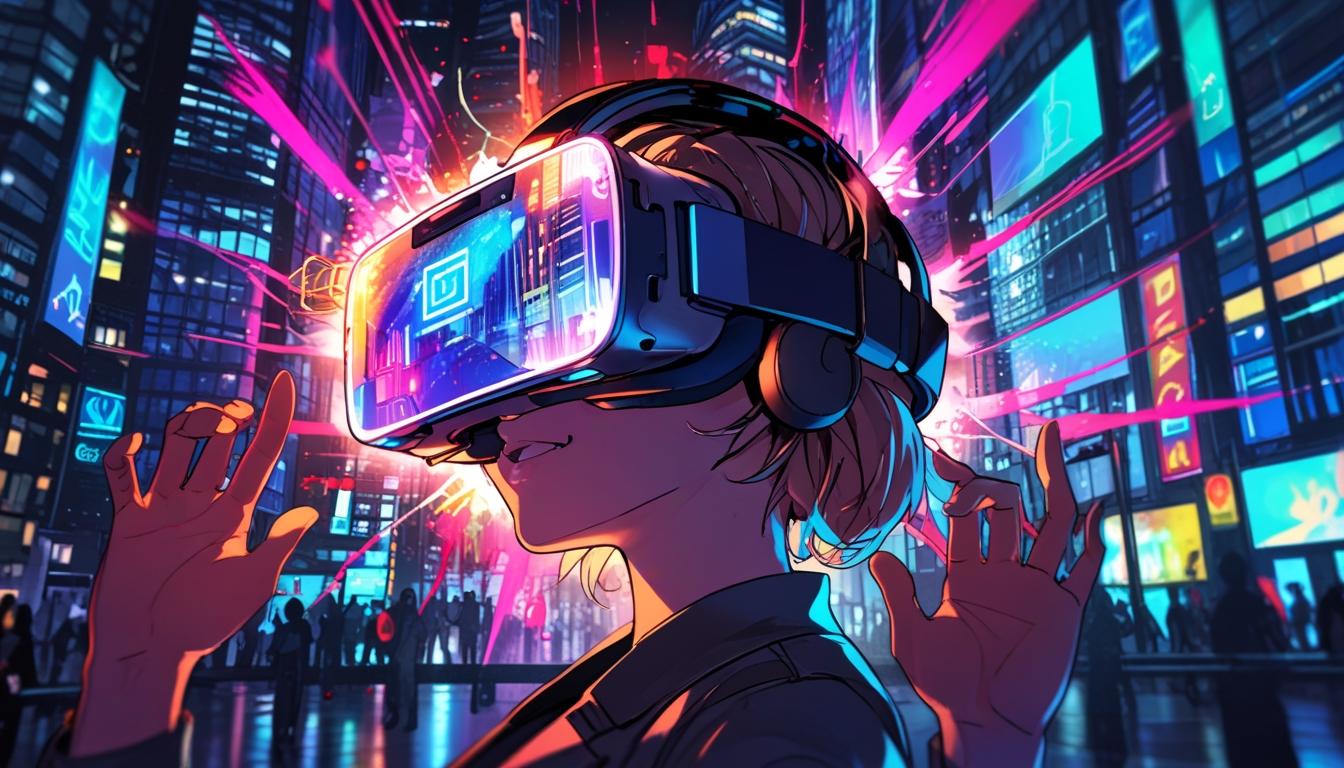Virtual worlds are rapidly emerging as pivotal spaces for brands looking to elevate their marketing strategies. The recent experiences, both personal and industry-wide, signal a shift where brands need to rethink their engagement methods in this increasingly digital landscape.
The reality of our digital transformation was strikingly illustrated when a family member accidentally damaged their television shortly after trying out a Meta Quest virtual reality headset. This incident, while unfortunate, underscores a growing trend: virtual environments are becoming integral to daily life, akin to traditional media platforms. As individuals, especially younger audiences, invest significant time in these virtual realms—from Minecraft to Fortnite—brands must recognise that their future relevance hinges on their presence in these spaces.
The virtual economy is not a distant concept; it has already established itself as a formidable player in the broader economic landscape. The success of the recent Minecraft movie, which saw an unprecedented opening weekend grossing $163 million, highlights this trajectory. It outperformed major titles like Barbie, showcasing the immense potential digital platforms hold for intersecting entertainment and branding. Brands are becoming more than mere background entities; they are embedding themselves within the gaming experience through innovative approaches like downloadable content and collaborative challenges. Gamers, for instance, can engage with brands by building virtual burger billboards for rewards, highlighting a novel method of brand interaction that extends beyond traditional advertising models.
The upcoming release of Grand Theft Auto VI exemplifies this burgeoning virtual ecosystem, generating enormous pre-order interest that projects revenues upward of $1 billion. The franchise’s artistic integration of fictional brands allows players to engage with a robust cultural landscape, further validating the power of virtual spaces as marketing platforms. The advent of tools such as AI-driven 'Spatial Intelligence' offers brands the capability to create immersive 3D environments from minimal inputs, representing a leap forward in how brands can construct experiential worlds tailored to consumers’ desires.
Moreover, the landscape is evolving towards a more participatory form of engagement, as evidenced by the popularity of brands within games like Fortnite. The introduction of interactive elements—such as a bazooka that launches fizzy candies in Mentos’ collaboration—transforms brand interaction from passive consumption to active participation. Gamers not only wear branded apparel; they live within digitally constructed worlds crafted by these brands. While this evolution opens vast marketing opportunities, it simultaneously raises ethical considerations, particularly regarding young audiences. There is an urgent need for brands to adopt responsible marketing practices, especially in contexts where children form a significant part of the user base.
Companies like Roblox are already blurring these lines, incorporating video ads from notable brands like e.l.f. beauty and Walmart into their virtual environments, thereby diversifying their revenue streams while creating advertising space that resonates with users. With over 72 million daily active users, many of whom belong to Generation Z, such strategies highlight the immense potential for brands willing to engage creatively within these platforms.
Luxury brands have also begun to explore these virtual landscapes fervently. Collaborations between fashion giants like Gucci and interactive platforms such as Zepeto have led to gamified experiences that push the boundaries of traditional retail. The integration of fashion into digital spaces is not merely a trend but rather a necessary evolution in how brands connect with and engage digitally-savvy consumers.
Brands like Nike are leading the way by creating fully interactive environments, such as Nikeland on Roblox, which garnered over 31 million visits. These creative initiatives not only entertain but also facilitate deeper connections between brands and their audiences. The fusion of the virtual and physical realms is becoming increasingly pronounced, enabling businesses to explore previously unthinkable marketing avenues.
As parents grapple with their children’s increasing digital immersion—from conversations about virtual headsets to managing game-related expenses—the question arises: how prepared are brands to meet the challenges associated with these innovations? The immersive environments of the future might offer exhilarating new experiences, but they equally require a commitment to ethical responsibility in marketing practices.
In conclusion, as the digital landscapes evolve, so too must the strategies of brands looking to thrive within them. The intersection of virtual realms, innovative storytelling, and responsible engagement presents an exciting frontier for marketers. The question remains: are your brand's strategies aligned with this evolving landscape, or is there a need for greater adaptability to harness the full potential of virtual environments? Now is the time for brands to consider their role in this upcoming digital renaissance.
Reference Map
- Paragraphs 1-3
- Paragraph 4
- Paragraph 5
- Paragraph 6
- Paragraph 7
- Paragraph 8
- Paragraph 9
- Paragraphs 10-11
Source: Noah Wire Services
